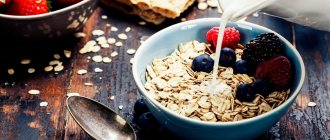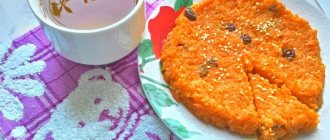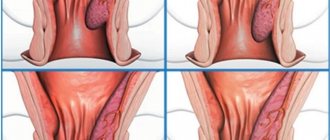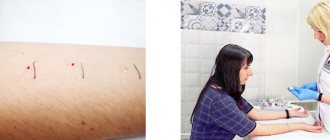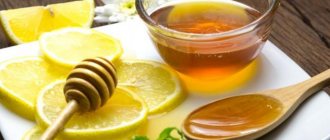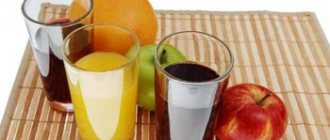What should be the diet for allergies? How to identify a product that causes dangerous reactions? How to make a diet safe for an allergy sufferer? Answers to important questions about food intolerance.
Food intolerance is a common condition. According to statistics, it is observed in 20% of people on the planet. Allergies cause discomfort, provoke unpleasant symptoms from the digestive system, and skin reactions. In some cases, it poses a direct threat to life, since the consumption of certain products can cause anaphylactic shock and suffocation.
You can suspect a food allergy based on the following symptoms:
- gastrointestinal disorders - bloating, indigestion, flatulence, stool disorders;
- skin rashes - itching, urticaria, persistent spots;
- breathing problems - shortness of breath, cough, sore throat without an accompanying cold or viral disease;
- difficulty sleeping.
Identifying an allergen significantly improves the quality of life of an allergy sufferer. And for this you need a hypoallergenic diet. In the professional environment it is called elimination. It involves temporarily removing potentially dangerous foods from the diet. And its gradual return with control of individual reaction.
Authorized Products
If a food allergy is determined, a special diet will be an important element of treatment. It is based on products that are considered hypoallergenic, that is, not causing negative reactions from the immune system.
White poultry meat (turkey and chicken), vegetable oil, rice, buckwheat, oatmeal, fermented milk products, green vegetables, potatoes, unsalted cheese, apples and green pears, unleavened bread (without yeast), crackers from white bread without additives, dried fruits, black and green tea.
The set of permitted food products is individual, so the exact diet for a particular person should be drawn up together with the attending physician.
Try to diversify your diet by consuming the same product no more than once every 3-4 days. This is necessary to ensure that specific food proteins do not accumulate in the body and cause the development of a new allergy attack.
What foods to exclude from the menu
If you are on a hypoallergenic diet, you should avoid the following foods:
- fish;
- citrus;
- nuts;
- coffee;
- chocolate;
- smoked meats;
- hard cheese;
- eggplant;
- eggs;
- tomatoes;
- mushrooms;
- honey;
- canned and pickled vegetables and fruits;
- mayonnaise and ketchup;
- alcohol;
- a pineapple;
- melon;
- all orange or red berries or fruits;
- spicy vegetables (radish, radish, horseradish);
- full-fat milk and dairy products;
- confectionery, fresh bread and pastries.
If you notice unwanted reactions (rashes, swelling, runny nose) after eating any other products (not on this list), they should also be completely excluded.
Diet for allergies - dangerous foods
A hypoallergenic diet does not limit the diet, in the usual sense of the term. Its task is to identify and remove a specific product or group to which the body reacts incorrectly. The reaction can occur to any type of food, but most often the following become allergenic:
- citrus fruits - oranges, grapefruits, tangerines;
- nightshade vegetables - tomatoes, potatoes, eggplants, bell peppers, paprika;
- nuts and seeds of all types;
- legumes - beans, lentils, peas, chickpeas;
- cereals - wheat, corn, barley, oats, rye, baked goods, pasta;
- meat - chicken, beef, pork;
- fish, seafood, shellfish;
- dairy products - milk, yogurt, kefir, cheese, ice cream;
- fats - butter, margarine, spread, mayonnaise;
- caffeine-based drinks;
- spices and seasonings - ready-made sauces, ketchup, mustard;
- sugar, sweets - honey, desserts based on regular sugar or fructose.
pixabay.com/congerdesign
It is important to understand that just because a person has a shellfish intolerance does not mean that they cannot safely consume dairy products or nuts. But this allergen needs to be identified, which is impossible without initial dietary changes. Therefore, at the first stage, everything that is a potential threat and has a high degree of allergenicity is removed from it.
Sample menu for a general hypoallergenic diet
To create an antihistamine diet menu for the week, be sure to take into account not only increased sensitivity to certain foods, but also the likelihood of “cross-allergy”. Thus, often people suffering from hay fever during the flowering period of birch cannot tolerate apples, plums, and hazelnuts (hazelnuts). And increased sensitivity to coffee almost always means an active reaction of the body to legumes.
If you have a severe reaction to cow's milk, it is better to avoid veal and beef, as well as soy and products containing stomach enzymes from cattle.
Intolerance to carrots may also indicate hypersensitivity to parsley, celery, vitamin A and carotene.
If you are allergic to fish, it is advisable to exclude fish and seafood, and also avoid contact with aquarium fish food, which is made from daphnia (water flea).
The proposed hypoallergenic diet menu option is indicative and can be changed or supplemented on the recommendation of an allergist or nutritionist.
First day
Breakfast: millet porridge with prunes, green tea.
Lunch: creamy cauliflower soup, steamed turkey meatballs, apple jelly.
Dinner: rice porridge with boiled beef or lean pork, low-fat kefir.
Second day
Breakfast: low-fat yogurt, 2 crackers of wheat bread with avocado, tea.
Lunch: stewed cabbage with rice, dried fruit compote.
Dinner: beef goulash, boiled potatoes, pear.
The third day
Breakfast: pasta with stewed vegetables, tea.
Lunch: porridge, apple, compote.
Dinner: boiled fish, stewed zucchini, jelly.
Fourth day
Breakfast: fruit salad, yogurt with biscuits.
Lunch: lean borscht, steamed cutlets, juice.
Dinner: vegetables stewed with pork, tea.
Fifth day
Breakfast: oatmeal with fruit, tea.
Lunch: vegetable soup with beef, kefir, fruit.
Dinner: porridge with vegetables, jelly.
Sixth day
Breakfast: turkey sandwich, yogurt, fruit.
Lunch: meat soup, banana, tea.
Dinner: pasta, cabbage salad, compote.
Seventh day
Breakfast: vegetable casserole with tea.
Lunch: vegetable stew, steamed meatballs, yogurt.
Dinner: porridge with cutlet, fruit jelly.
Food allergies: what are they and what foods to avoid?
How do you know if you have an allergy? What foods are the most dangerous for adults and children? Why should those who react to rubber gloves not eat avocados? We've collected everything you need to know about food allergies.
Allergies or food intolerances?
Food allergies are a common problem, especially in children: on average, they affect 10% of children and 2% of adults¹. At the same time, sticking to a hypoallergenic diet has become a real trend. To see this, just enter the hashtag #glutenfree on Instagram: under it there are almost 31 million posts and stories from bloggers about how wonderful life is without bread and cupcakes. But does everyone need such a diet? Research shows that people are sometimes misled about their condition. According to a JAMA Network Open report, 19% of respondents believed they had a food allergy, although in reality this figure was only 10.8%². Why did it happen?
Some symptoms of food allergies and intolerances are similar: both may cause gastrointestinal symptoms. However, most allergic symptoms, such as hives, watery eyes and difficulty breathing, are not characteristic of food intolerance¹,¹⁹. If you experience an unusual reaction to food, you should consult a doctor. The specialist will conduct an examination that will help determine the cause of the symptoms and prescribe the correct treatment.
Food allergies³
This is an increased sensitivity of the body to food products, caused by the immune mechanism of development. The result is a whole list of unpleasant symptoms from urticaria and diarrhea to more serious ones, such as anaphylactic shock and Quincke's edema²⁰. An important point: even a minimal amount of allergen can provoke an allergic reaction. This means that if the examination shows an allergy to strawberries, then it will have to be excluded completely, no “a little bit is possible”⁴.
Food intolerance
A non-immune reaction, most often caused by the absence or insufficient amount of enzymes involved in the digestion or metabolism of food components⁵,⁶. Typically, intolerance manifests itself as symptoms only in the gastrointestinal tract. Most often, the body’s reaction depends on the amount eaten⁷.
Is gluten an allergen?
Wheat is considered the most common and highly sought after grain, and gluten is its main structural protein component. It can be included in bread and bakery, pasta, and confectionery products⁸,²¹.
Gluten-dependent diseases can develop both by an immune mechanism (celiac disease, gluten allergy and others) and by a non-immune mechanism⁹,¹⁰,¹¹. To find out the true cause of the symptoms, it is necessary to undergo a series of examinations. With their help, the doctor will determine the diagnosis: is it intolerance, allergy or something else.
What foods are the most allergenic?¹²,¹³
Cow's milk
Milk protein allergy develops especially often in young children.¹³.
Egg
It contains 13 protein allergens. The most significant are ovomucoid, ovalbumin, conalbumin, lysozyme, ovoglobulin, and yolk levetin¹⁴.
Fish
Fish allergens are heat stable, that is, they are practically not destroyed during cooking¹³ . Severe systemic reactions can develop if even a small amount of the product enters the body¹⁴. At the same time, reactions to sea fish are more common than to river fish¹³.
Wheat
As mentioned, proteins in cereals, especially wheat and rye, can cause allergies.¹².
Seafood
They have pronounced allergenic properties. These include crustaceans (shrimp, crabs, crayfish, lobsters) and shellfish (mussels, scallops, oysters, squid, octopus, etc.). People who are sensitized to seafood proteins, mainly to tropomyosin, may develop a cross-allergic reaction to components of house dust (insect particles, house dust mites) ¹⁴.
Peanut
Contains a wide range of allergens, the irritating properties of which increase after boiling or roasting peanuts. It is very widely used in the food industry, so traces of the product can appear anywhere²² . It is important to read labels; they often contain warnings to this effect. Peanuts can cause severe reactions, including anaphylaxis¹⁴.
Soybeans
Soy contains proteins that can cause allergies; the most dangerous are glycinin and conglycine¹⁴ . Like peanuts, it is often a hidden allergen in food. For example, a reaction may occur due to cooked sausage containing soy²².
What are children most often allergic to, and what are adults most likely to be allergic to?¹⁵
The same foods play a different role in the development of allergies in children and adults.
- In adults, food allergies are usually cross-related, while the main disease remains a reaction to pollen, household dust or some other irritants.
- In childhood, an immune reaction is most often caused by cow's milk, chicken eggs, fish and legumes, and a little less often by gluten, banana and rice proteins. 76% of children are sensitive to several products at once.
- But for adults, the most common causes of allergies are peanuts and nuts, fish and seafood. Read product labels carefully! Sometimes a chocolate bar or healthy snack may contain traces of peanuts.
Cross allergy: why does a sensitivity to birch pollen cause a reaction to apples?
If you are allergic to one product, such as peanuts, then such a reaction may occur to foods that are identical in antigenic composition: soy, bananas and others ¹³ . However, we are not just talking about food. Thus, a person who becomes ill from birch pollen is highly likely to be intolerant of peaches and apples¹⁶. People with latex allergies (such as cleaning gloves) may have an adverse reaction to kiwi, banana, and avocado¹⁷. So, if you know that you have allergies, be sure to have a reminder about possible cross-reactions between allergens.
How are allergies diagnosed?
If you notice a strange reaction to foods or other substances (dust, pollen, etc.), consult a doctor. He will prescribe the necessary examinations, such as a skin test, which evaluates the skin's reaction to suspected allergens¹⁸. Another method is to analyze the content of specific IgE to food allergens in the blood serum. If necessary, the doctor can also prescribe provocative tests (the allergen acts directly on the digestive system) and other diagnostic methods.
How to relieve allergy symptoms?
Treatment of food allergies should be comprehensive. An important role in therapy is played by the exclusion of causally significant foods from the diet. In cases of mild allergy manifestations, an elimination diet (excluding allergens) may be the only treatment method.
To relieve non-life-threatening symptoms, second-generation antihistamines (for example, cetirizine) are used; they have a favorable safety profile. But first-generation drugs should not be used due to pronounced side effects: sedative and anticholinergic (more details about the difference between generations can be found in the article “How to choose an antihistamine”). When skin symptoms appear, external therapy is carried out ¹⁴.
If you notice an unusual reaction to a product you have eaten, you should consult a doctor for an examination and a recommendation for treatment.
Illustrations: Nina Magradze
Diet for atopic dermatitis
The chronic form of allergies - atopic dermatitis - requires maximum attention to nutrition. All recipes should be as simple as possible, and the quality of the products should not raise the slightest doubt.
For atopic dermatitis, wheat, bananas, honey and sugar, red and orange vegetables, fruits or berries, milk and dairy products, eggs, fatty meats and fish, chocolate, herbs and spices, coffee, vinegar, nuts, sweets should be excluded from the menu. , spicy dishes.
Prepare soups from soaked vegetables and cereals, steamed cutlets from turkey or lean meat, casseroles, vegetable purees with the addition of vegetable oil, porridge from permitted cereals, dried fruit compotes.
What is possible?
Question answer
Why do city dwellers mostly suffer from allergies? Most often, the following products are allowed to be included in the hypoallergenic diet menu:
- Meat: boiled beef, white meat chicken and turkey;
- Vegetarian soups made from approved products;
- Vegetable oil: olive, sunflower;
- Porridge: rice, buckwheat, oatmeal;
- Lactic acid products: you can have cottage cheese, yogurt, kefir and yogurt without additives;
- Brine cheese (brynza);
- Vegetables: cucumbers, cabbage, leafy greens, potatoes, green peas;
- Fruits: green apples, preferably baked, pears;
- Tea and dried fruit compote;
- Dried white bread, unleavened flatbread, unleavened (yeast-free) lavash.
Please note that the list of permitted foods, as well as the list of prohibited foods, may vary depending on individual indications, and the final version of the diet should be drawn up by the attending physician.
Diet recipes
Corn porridge in a slow cooker (steamer)
Place washed corn grits (200 grams) into a cup for steaming rice and fill with water in a ratio of 1 to 4 (4 cups of water for each cup of grits). Set the steamer timer for 30 minutes.
At the end of the cycle, add a little salt to the porridge, add a couple of tablespoons of vegetable oil and mix well. If necessary, you can add a little hot water. Turn on the steamer for another 5 minutes. Leave the steamer with the porridge closed for 10-15 minutes, so that it steams well. When serving, the porridge can be supplemented with stewed vegetables, meatballs or natural yogurt.
If you want to cook a large portion of porridge at once, keep in mind that it will take more time to warm up and cook.
Dinner in a slow cooker
Soak peeled, washed and cut into pieces potatoes and cauliflower with water for an hour. Divide the soaked vegetables: place the potatoes in the multicooker bowl, and the cauliflower in the overhead steamer (upper compartment). Cover the cabbage with slices of turkey fillet (cut the meat into medium-sized pieces, you can beat it lightly). Sprinkle with a little sea salt and cook for an hour in the "Steam" mode.
It is better to serve the finished dish with natural yogurt or low-fat sour cream.
Features of the menu for nursing mothers
During lactation, it is important to monitor the nutrition of a nursing mother, since food directly affects the quality of breast milk and its composition. So, when eating chocolate, citrus fruits, too fatty foods or products containing dyes, flavors or other synthetic additives (stabilizers, emulsifiers), the baby’s fragile immune system may react too violently: rashes on the cheeks, colic, bloating, constipation or diarrhea.
Mothers who themselves suffer from allergies should pay special attention to nutrition. It has been proven that the tendency to food sensitivities is inherited, which means that the likelihood of allergies developing in children, one (or both) of whose parents suffer from allergies, is much higher.
In this case, the basis of a nursing mother’s diet should be dairy-free cereals, vegetarian soups made from permitted vegetables and cereals, fruits and berries of dim colors, and dried fruits.
Menu options for the day
Article on the topic
Allergies: causes, symptoms and treatment in case of an acute reaction Breakfast: wheat porridge, tea, green apple
Snack: cottage cheese
Lunch: vegetable soup, meatballs, pasta and dried apple compote
Dinner: vinaigrette, tea with a bun
Breakfast: buckwheat porridge, tea, apple
Snack: coffee with milk, cookies
Lunch: Minced chicken soup, boiled beef stroganoff and mashed potatoes, compote
Dinner: curd pudding, jelly
Breakfast: semolina porridge, tea, apple
Snack: Cabbage and carrot salad
Lunch: vegetarian cabbage soup, baked rabbit leg, stewed carrots, compote
Dinner: milk noodles
Reintroduction of products to identify hypersensitivity
Best materials of the month
- Coronaviruses: SARS-CoV-2 (COVID-19)
- Antibiotics for the prevention and treatment of COVID-19: how effective are they?
- The most common "office" diseases
- Does vodka kill coronavirus?
- How to stay alive on our roads?
A long-term hypoallergenic diet can cause the development of hypovitaminosis or a lack of minerals, so most often doctors prescribe additional vitamin-mineral complexes.
After a period of strict diet, when all manifestations of allergies (rash, swelling, runny nose) have completely disappeared, you should gradually begin to introduce new foods.
This way, you can accurately identify the foods that cause a particular reaction. In addition, it is not uncommon for a rash or swelling to occur after exceeding a certain dose of the product. For example, one toast made from wheat bread does not cause discomfort, but after two or three pieces, discomfort in the stomach, itching or rashes on the skin appear. This means that to prevent allergic reactions you will only need to not exceed portions of foods that are safe for you.
Remember that products must be introduced one at a time, starting with a portion of 10 grams on the first day, gradually increasing it to 150 grams over the course of a week. If after a week of continuous use there is no repeated reaction, the product can be considered permitted and used in the daily diet (in reasonable quantities).
A new product can be introduced no earlier than 2 weeks after the previous one has been completely introduced.
Be sure to keep a food diary, where you write down not only a detailed list of all the foods you eat during the day, but also your well-being, the presence/absence of allergic reactions. This will help you more accurately track reactions to certain food combinations.
Hypoallergenic diet - nutrition tips
It may seem like you can't eat anything at all on this diet. Indeed, in the allergen identification (elimination) phase, restrictions must be strict, otherwise dangerous components will not be found.
However, there are safe products that in the vast majority of cases do not cause allergic reactions. And even if you have persistent or varied food intolerances, you can include them in your diet with confidence and without risks.
Among them:
- all fruits except citrus fruits;
- all vegetables except nightshades;
- cereals - buckwheat and rice;
- meat - turkey, lamb;
- fish - salmon, trout, herring, mackerel;
- milk substitutes - coconut, rice milk;
- healthy fats - olive, flaxseed, cold-pressed coconut oil;
- drinks - water, herbal tea;
- spices - apple cider vinegar, black pepper, fresh and dried herbs.
This large group of products allows you to eat nutritiously and variedly without experiencing restrictions. In case of food intolerance, they should become the basis of the diet. While potentially dangerous and allergenic ingredients should be used in the menu with caution, from time to time.

